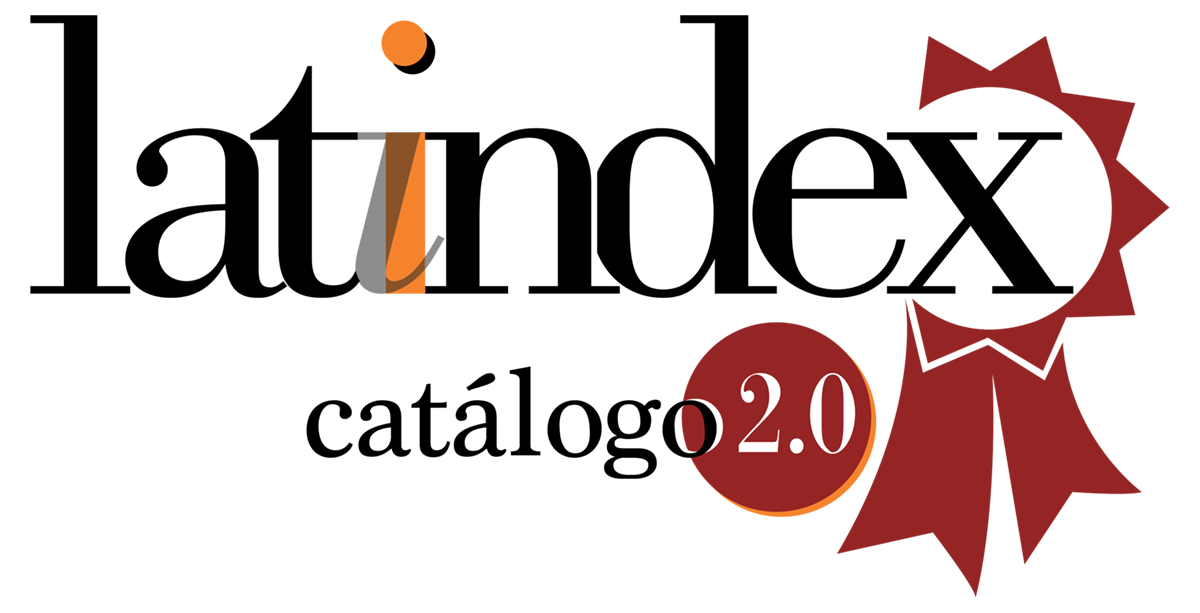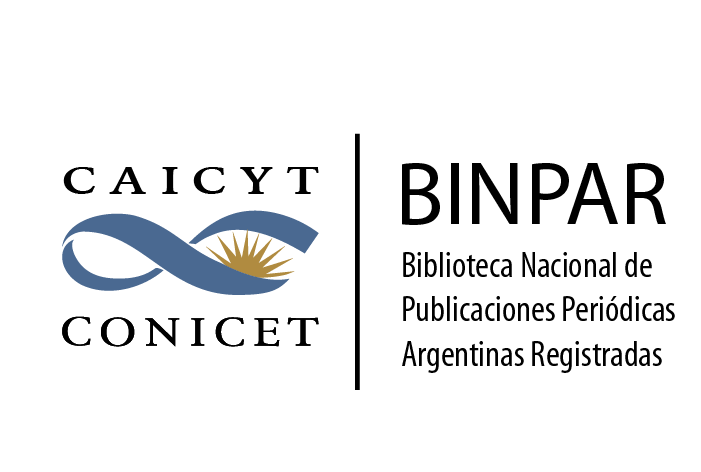Earworms: Caracterizando uma imaginação musical cotidiana
DOI:
https://doi.org/10.24215/18530494e073Palavras-chave:
Earworm, imaginação musical involuntária, memória musical, musicalidadeResumo
Earworms, ou Imaginação Musical Involuntária (Involuntary Musical Imagery, InMI), constituem uma das formas mais difundidas da imaginação musical, designando a experiência mental espontânea com fragmentos musicais geralmente melódicos, familiares ao indivíduo e de maneira repetitiva. A terminologia InMI é imprecisa, pois pode englobar fenômenos diversos como obsessões ou alucinações, enquanto que earworms constituem uma experiência mais específica, cotidiana e não patológica, altamente prevalente, ainda que compreendida de forma incipiente. Este trabalho visa discutir (1) a literatura atual sobre o fenômeno, identificando consensos emergentes e pontos controversos, (2) certas limitações metodológicas, e (3) as interpretações generalistas correntes que associam a experiência a conceitos cognitivos correlatos. A partir de uma revisão narrativa das pesquisas teóricas e empíricas nos campos da cognição musical, psicologia e neurociências, os resultados mostram que tratar o fenômeno como mera rememoração involuntária valida alguns preditores intuitivos, como a exposição musical repetitiva e gatilhos associativos, mas obscurece nuances mnemônicas específicas à cognição musical. O artigo contribui para o entendimento interdisciplinar dos earworms, oferecendo insights sobre sua natureza enquanto uma manifestação cotidiana da musicalidade humana, indicando a existência de alguma especificidade cognitiva musical para a compreensão do fenômeno.
Referências
Arthur, C. (2023). Why do songs get “stuck in our heads”? Towards a theory for explaining earworms. Music & Science, 6, 20592043231164581. https://doi.org/10.1177/20592043231164581
Baddeley, A. D. y Hitch, G. (1993). The recency effect: Implicit learning with explicit retrieval? Memory & Cognition, 21(2), 146-155. https://doi.org/10.3758/BF03202726
Bailes, F. (2015). Music in mind? An experience sampling study of what and when, towards an understanding of why. Psychomusicology: Music, Mind, and Brain, 25(1), 58-68. https://doi.org/10.1037/pmu0000078
Beaman, C. P. (2018). The literary and recent scientific history of the earworm: A review and theoretical framework. Auditory Perception & Cognition, 1(1-2), 42-65. https://doi.org/10.1080/25742442.2018.1533735
Beaman, C. P., Powell, K. y Rapley, E. (2015). Want to block earworms from conscious awareness? B(u)y gum! Quarterly Journal of Experimental Psychology, 68(6), 1049-1057. https://doi.org/10.1080/17470218.2015.1034142
Beaman, C. P. y Williams, T. I. (2010). Earworms (stuck song syndrome): Towards a natural history of intrusive thoughts. British Journal of Psychology, 101(4), 637-653. https://doi.org/10.1348/000712609x479636
Beaman, C. P. y Williams, T. I. (2013). Individual differences in mental control predict involuntary musical imagery. Musicae Scientiae, 17(4), 398-409. https://doi.org/10.1177/1029864913492530
Beaty, R. E., Burgin, C. J., Nusbaum, E. C., Kwapil, T. R., Hodges, D. A. y Silvia, P. J. (2013). Music to the inner ears: Exploring individual differences in musical imagery. Consciousness and Cognition, 22(4), 1163-1173. https://doi.org/https://doi.org/10.1016/j.concog.2013.07.006
Berntsen, D. (1996). Involuntary autobiographical memories. Applied Cognitive Psychology, 10(5), 435-454. https://doi.org/10.1002/(SICI)1099-0720(199610)10:5<435::AID-ACP408>3.0.CO;2-L
Berntsen, D. (2021). Involuntary autobiographical memories and their relation to other forms of spontaneous thoughts. Philosophical Transactions of the Royal Society Biological Sciences, 376(1817), 20190693. https://doi.org/10.1098/rstb.2019.0693
Berntsen, D. y Hall, N. M. (2004). The episodic nature of involuntary autobiographical memories. Memory & Cognition, 32(5), 789-803. https://doi.org/10.3758/BF03195869
Byron, T. P. y Fowles, L. C. (2015). Repetition and recency increase involuntary musical imagery of previously unfamiliar songs. Psychology of Music, 43(3), 375-389. https://doi.org/10.1177/0305735613511506
Calvert, S. L. y Tart, M. (1993). Song versus verbal forms for very-long-term, long-term, and short-term verbatim recall. Journal of Applied Developmental Psychology, 14(2), 245-260. https://doi.org/https://doi.org/10.1016/0193-3973(93)90035-T
Campbell, S. M. y Margulis, E. H. (2015). Catching an earworm through movement. Journal of New Music Research, 44(4), 347-358. https://doi.org/10.1080/09298215.2015.1084331
Cotter, K. N., Christensen, A. P. y Silvia, P. J. (2016). Musical minds: Personality, schizotypy, and involuntary musical imagery. Psychomusicology: Music, Mind, and Brain, 26(3), 220–225. https://doi.org/10.1037/pmu0000158
Cowan, N. (2005). Working memory capacity. Psychology Press.
Dawkins, R. (1976). Selfish gene. Oxford University Press.
Denmark, F. L. (2010). Zeigarnik effect. En I. B. Weiner y W. E. Craighead (Eds.), The Corsini Encyclopedia of Psychology (pp. 1873–1874). John Wiley & Sons. https://doi.org/10.1002/9780470479216.corpsy0924
Farrugia, N., Jakubowski, K., Cusack, R. y Stewart, L. (2015). Tunes stuck in your brain: The frequency and affective evaluation of involuntary musical imagery correlate with cortical structure. Consciousness and Cognition, 35, 66-77. https://doi.org/https://doi.org/10.1016/j.concog.2015.04.020
Fitch, W. T. (2015). Four principles of bio-musicology. Philosophical Transactions of the Royal Society B: Biological Sciences, 370(1664), 20140091. https://doi.org/doi:10.1098/rstb.2014.0091
Floridou, G. A. y Müllensiefen, D. (2015). Environmental and mental conditions predicting the experience of involuntary musical imagery: An experience sampling method study. Consciousness and Cognition, 33, 472-486. https://doi.org/10.1016/j.concog.2015.02.012
Floridou, G. A., Williamson, V. J. y Emerson, L. M. (2018). Towards a new methodological approach: A novel paradigm for covertly inducing and sampling different forms of spontaneous cognition. Consciousness and Cognition, 65, 126-140. https://doi.org/https://doi.org/10.1016/j.concog.2018.07.014
Floridou, G. A., Williamson, V. J. y Stewart, L. (2017). A novel indirect method for capturing involuntary musical imagery under varying cognitive load. Quarterly Journal of Experimental Psychology, 70(11), 2189-2199. https://doi.org/10.1080/17470218.2016.1227860
Floridou, G. A., Williamson, V. J., Stewart, L. y Müllensiefen, D. (2015). The involuntary musical imagery scale (IMIS). Psychomusicology: Music, Mind, and Brain, 25, 28-36. https://doi.org/10.1037/pmu0000067
Goodman, S. (2010). Sonic warfare: Sound, affect, and the ecology of fear. The MIT Press.
Halpern, A. R. y Bartlett, J. C. (2011). The persistence of musical memories: a descriptive study of earworms. Music Perception, 28(4), 425-432. https://doi.org/10.1525/mp.2011.28.4.425
Henrich, J., Heine, S. J. y Norenzayan, A. (2010). The weirdest people in the world? Behavioral and Brain Sciences, 33(2-3), 61-83. https://doi.org/10.1017/s0140525x0999152x
Huron, D. (2001). Is music an evolutionary adaptation? Annals of the New York Academy of Sciences, 930, 43-61. https://doi.org/10.1111/j.1749-6632.2001.tb05724.x
Huron, D. (2006). Sweet anticipation: Music and the psychology of expectation. Bradford book.
Hyman, I. E., Cutshaw, K. I., Hall, C. M., Snyders, M. E., Masters, S. A., Au, V. S. K. y Graham, J. M. (2015). Involuntary to intrusive: Using involuntary musical imagery to explore individual differences and the nature of intrusive thoughts. Psychomusicology: Music, Mind, and Brain, 25, 14-27. https://doi.org/10.1037/pmu0000075
Hyman, I. E., Burland, N. K., Duskin, H. M., Cook, M. C., Roy, C. M., McGrath, J. C. y Roundhill, R. F. (2013). Going Gaga: Investigating, creating, and manipulating the song stuck in my head. Applied Cognitive Psychology, 27(2), 204-215. https://doi.org/https://doi.org/10.1002/acp.2897
Jakubowski, K. (2020). Musical imagery. En A. Abraham (Ed.), The Cambridge Handbook of the Imagination (pp. 187-206). Cambridge University Press. https://doi.org/10.1017/9781108580298.013
Jakubowski, K., Bashir, Z., Farrugia, N. y Stewart, L. (2018). Involuntary and voluntary recall of musical memories: A comparison of temporal accuracy and emotional responses. Memory & Cognition, 46(5), 741-756. https://doi.org/10.3758/s13421-018-0792-x
Jakubowski, K., Farrugia, N., Halpern, A. R., Sankarpandi, S. K. y Stewart, L. (2015). The speed of our mental soundtracks: Tracking the tempo of involuntary musical imagery in everyday life. Memory & Cognition, 43(8), 1229-1242. https://doi.org/10.3758/s13421-015-0531-5
Jakubowski, K., Finkel, S., Stewart, L. y Müllensiefen, D. (2017). Dissecting an earworm: Melodic features and song popularity predict involuntary musical imagery. Psychology of Aesthetics, Creativity, and the Arts, 11, 122-135. https://doi.org/10.1037%2Faca0000090
Jue, D., Jianping, M. y Yiduo, Y. (2020). Validation of the Chinese involuntary musical imagery scale and its application in mainland China. Musicae Scientiae, 26(2), 326-338. https://doi.org/10.1177/1029864920948572
Killingly, C., Lacherez, P. y Meuter, R. (2021). Singing in the brain: investigating the cognitive basis of earworms. Music Perception, 38(5), 456-472. https://doi.org/10.1525/mp.2021.38.5.456
Kvavilashvili, L. y Mandler, G. (2004). Out of one's mind: a study of involuntary semantic memories. Cogn Psychol, 48(1), 47-94. https://doi.org/10.1016/s0010-0285(03)00115-4
Liikkanen, L. A. (2012). Musical activities predispose to involuntary musical imagery. Psychology of Music, 40(2), 236-256. https://doi.org/10.1177/0305735611406578
Liikkanen, L. A. (2012). Inducing involuntary musical imagery: An experimental study. Musicae Scientiae, 16(2), 217-234. https://doi.org/10.1177/1029864912440770
Liikkanen, L. A. y Jakubowski, K. (2020). Involuntary musical imagery as a component of ordinary music cognition: A review of empirical evidence. Psychonomic Bulletin & Review, 27(6), 1195-1217. https://doi.org/10.3758/s13423-020-01750-7
Liikkanen, L. A., Jakubowski, K. y Toivanen, J. M. (2015). Catching earworms on Twitter: Using big data to study involuntary musical imagery. Music Perception, 33(2), 199-216. https://doi.org/10.1525/mp.2015.33.2.199
Mace, J. H. (2018). Involuntary autobiographical memories: Spontaneous recollections of the past. En K. Christoff y K. C. R. Fox (Eds.), The Oxford Handbook of Spontaneous Thought: Mind-Wandering, Creativity, and Dreaming (pp. 469-476). Oxford University Press. https://doi.org/10.1093/oxfordhb/9780190464745.013.37
Mace, J. H., Atkinson, E., Moeckel, C. H. y Torres, V. (2011). Accuracy and perspective in involuntary autobiographical memory. Applied Cognitive Psychology, 25(1), 20-28. https://doi.org/10.1002/acp.1634
MacLeod, C. M. (2020). Zeigarnik and von Restorff: The memory effects and the stories behind them. Memory & Cognition, 48(6), 1073-1088. https://doi.org/10.3758/s13421-020-01033-5
Margulis, E. H. (2014). On repeat: How music plays the mind. Oxford University Press.
McCrae, R. R. y John, O. P. (1992). An introduction to the five-factor model and its applications. Journal of Personality, 60(2), 175-215. https://doi.org/10.1111/j.1467-6494.1992.tb00970.x
Mills, C., Herrera-Bennett, A., Faber, M. y Christoff, K. (2018). Why the mind wanders: How spontaneous thought’s default variability may support episodic efficiency and semantic optimization. En K. Christoff y K. C. R. Fox (Eds.), The Oxford Handbook of Spontaneous Thought: Mind-Wandering, Creativity, and Dreaming (pp. 11-22). Oxford University Press. https://doi.org/10.1093/oxfordhb/9780190464745.013.42
Moeck, E. K., Hyman Jr, I. E. y Takarangi, M. K. T. (2018). Understanding the overlap between positive and negative involuntary cognitions using instrumental earworms. Psychomusicology: Music, Mind, and Brain, 28(3), 164-177. https://doi.org/10.1037/pmu0000217
Moseley, P., Alderson-Day, B., Kumar, S. y Fernyhough, C. (2018). Musical hallucinations, musical imagery, and earworms: A new phenomenological survey. Consciousness and Cognition, 65, 83-94. https://doi.org/10.1016/j.concog.2018.07.009
Müllensiefen, D., Fry, J., Jones, R., Jilka, S., Stewart, L. y Williamson, V. J. (2014). Individual differences predict patterns in spontaneous involuntary musical imagery. Music Perception, 31(4), 323-338. https://doi.org/10.1525/mp.2014.31.4.323
Negishi, K. y Sekiguchi, T. (2020). Individual traits that influence the frequency and emotional characteristics of involuntary musical imagery: An experience sampling study. PLoS ONE, 15(6), e0234111. https://doi.org/10.1371/journal.pone.0234111
Pinker, S. (1998). Como a mente funciona. (2ª ed., L. T. Motta, Trad.). Companhia das Letras.
Pitman, M. M., Geffen, T. y Nettleton, P. (2021). Psychometric evaluation of the Involuntary Musical Imagery Scale (IMIS) in a south african sample. Musicae Scientiae, 27(2), 495-509. https://doi.org/10.1177/10298649211028643
Poe, E. A. (1845). The imp of the perverse. Random House.
Reyna, V. F. y Brainerd, C. J. (1995). Fuzzy-trace theory: An interim synthesis. Learning and Individual Differences, 7(1), 1-75. https://doi.org/https://doi.org/10.1016/1041-6080(95)90031-4
Smith, J. D., Wilson, M. y Reisberg, D. (1995). The role of subvocalization in auditory imagery. Neuropsychologia, 33(11), 1433-1454. https://doi.org/10.1016/0028-3932(95)00074-d
Snyder, B. (2000). Music and memory: An introduction. The MIT Press.
Sripada, C. S. (2018). An exploration/exploitation trade-off between mind-wandering and goal-directed thinking. En K. Christoff y K. C. R. Fox (Eds.), The Oxford Handbook of Spontaneous Thought: Mind-Wandering, Creativity, and Dreaming (pp. 23-34). Oxford University Press. https://doi.org/10.1093/oxfordhb/9780190464745.013.28
Szendy, P., Nancy, J.-L. y ProQuest. (2008). Listen: A history of our ears. Fordham University Press.
Talarico, J. M. y Rubin, D. C. (2003). Confidence, not consistency, characterizes flashbulb memories. Psychological Science, 14(5), 455-461. https://doi.org/10.1111/1467-9280.02453
Twain, M. (1876-1878). Punch, brothers, punch! and other stories. Slote, Woodman & Co.
Varella, M. A. C. (2018). A evolução adaptativa das propensões artísticas. En M. E. Yamamoto y J. V. Valentova (Eds.), Manual de psicologia evolucionista (pp. 524–543). EDUFRN. https://repositorio.usp.br/item/002996659
Varella, M. A. C., Varella Valentova, J. y Fernández, A. M. (2015). Evolution of artistic and aesthetic propensities through female competitive ornamentation. En M. L. Fisher (Ed.), The Oxford Handbook of Women and Competition (pp. 757–784). Oxford University Press. https://doi.org/10.1093/oxfordhb/9780199376377.013.46
Wegner, D. M. (1994). Ironic processes of mental control. Psychological Review, 101(1), 34-52. https://doi.org/10.1037/0033-295X.101.1.34
Weir, G., Williamson, V. J. y Müllensiefen, D. (2015). Increased involuntary musical mental activity is not associated with more accurate voluntary musical imagery. Psychomusicology: Music, Mind, and Brain, 25, 48-57. https://doi.org/10.1037/pmu0000076
Williams, T. (2015). The classification of involuntary musical imagery: the case for earworms. Psychomusicology: Music, Mind, and Brain, 25, 5-13. https://doi.org/10.1037/pmu0000082
Williamson, V. J. y Jilka, S. R. (2014). Experiencing earworms: An interview study of involuntary musical imagery. Psychology of Music, 42(5), 653-670. https://doi.org/10.1177/0305735613483848
Williamson, V. J., Jilka, S. R., Fry, J., Finkel, S., Müllensiefen, D. y Stewart, L. (2012). How do “earworms” start? Classifying the everyday circumstances of involuntary musical imagery. Psychology of Music, 40(3), 259-284. https://doi.org/10.1177/0305735611418553
Williamson, V. J., Liikkanen, L. A., Jakubowski, K. y Stewart, L. (2014). Sticky tunes: How do people react to involuntary musical imagery? PLoS ONE, 9(1), e86170. https://doi.org/10.1371/journal.pone.0086170
Publicado
Edição
Seção
Licença
Copyright (c) 2024 Vitor Yamaguchi

Este trabalho está licenciado sob uma licença Creative Commons Attribution-NonCommercial-ShareAlike 4.0 International License.
Politica vigente desde octubre de 2019
La aceptación del manuscrito por parte de la revista implica la cesión no exclusiva de los derechos patrimoniales de los/as autores/as en favor del editor, quien permite la reutilización, luego de su edición (postprint), bajo una Licencia Creative Commons Atribución-NoComercial-CompartirIgual 4.0 Internacional (CC BY-NC-SA 4.0)
Acorde a estos términos, el material se puede copiar y redistribuir en cualquier medio o formato siempre que a) se cite la autoría y la fuente original de su publicación (revista y URL de la obra), se brinde el acceso a la licencia y se indique si se realizaron cambios; b) no se utilice el material para fines comerciales.
La cesión de derechos no exclusivos implica que luego de su edición (postprint) en Epistemus los/as autores/as pueden publicar su trabajo en cualquier idioma, medio y formato; en tales casos, se solicita que se consigne que el material fue publicado originalmente en esta revista.
Tal cesión supone, también, la autorización de los/as autores/as para que el trabajo sea cosechado por SEDICI, el repositorio institucional de la Universidad Nacional de La Plata, y sea difundido en las bases de datos que el equipo editorial considere adecuadas para incrementar la visibilidad de la publicación y de sus autores/as.
Asimismo, la revista incentiva a los/as autores/as para que luego de su publicación en Epistemus depositen sus producciones en otros repositorios institucionales y temáticos, bajo el principio de que ofrecer a la sociedad la producción científica y académica sin restricciones contribuye a un mayor intercambio del conocimiento global.



























